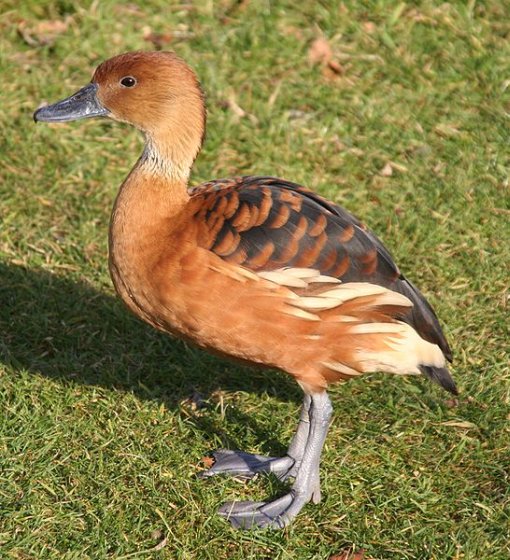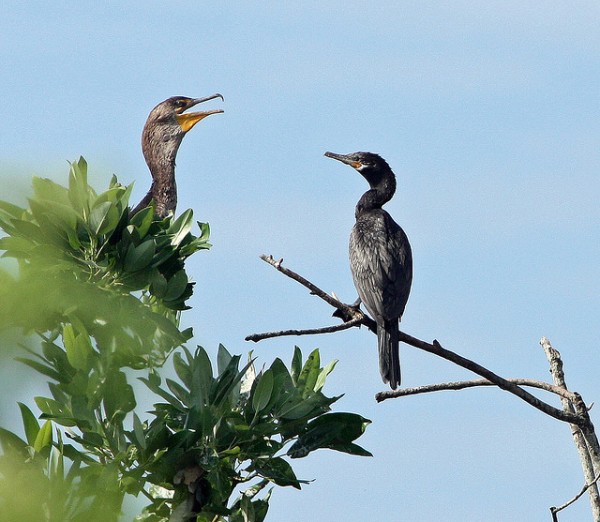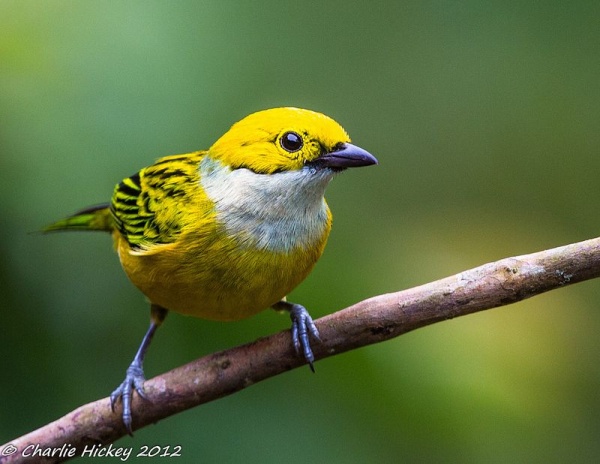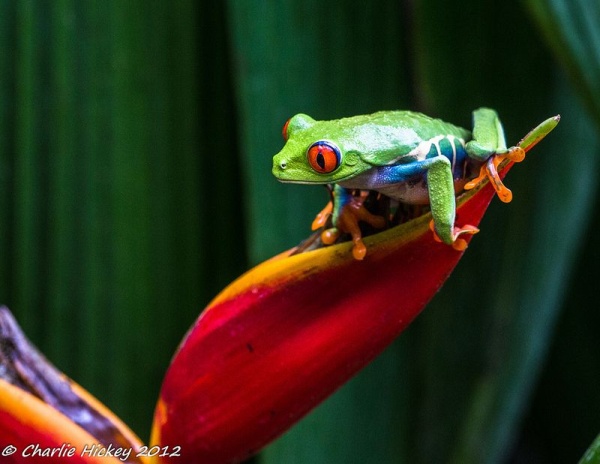Peacocks are very noisy during the breeding season, especially when they call with repeated penetrating screams.
Not only do they scream but the male makes a unique call just before he mates with a female. As he dashes toward her he lets out a bell-like whoop.
This call intrigued Duke University biologist Jessica Yorzinski. Why do male peacocks do this? The sound gives away their location and could tell predators, “Hey! There are two very distracted peacocks over here.”
She studied the whoop by playing back recorded bird sounds, including crow caws and the whoop, to wild peacocks in India. The peahens ignored the other sounds but when they heard the whoop they actually walked toward the audio speakers. Yorzinski also tried the playback with captive peafowl at Duke. The result was the same. The ladies approached the sound as if they were thinking, “There’s a really hot guy over there. I think I’ll go see.”
In the video above a lone male makes two kinds of calls. He repeats the scream interspersed with a sound like the “whoop” at time codes 0:22, 0:39, 0:56, 1:08, and 1:44. Yes, I think he’s faking it. He seems to be pretending he’s mating with a peahen and hoping the other peahens come to see.
When he mates with a female in this video he makes a softer whoop, the real one.
Click here for more information on this study in Science Daily.
(video from peacocklover27 on You Tube)







